Mon 20 Oct 2014
Two major events drew crowds to Nicasio last weekend. One was in the center of town Saturday, the other on the edge of town Sunday, and that was in addition to the usual throng who showed up for Rancho Nicasio’s weekend music.
On Saturday, the Nicasio Historical Society held a grand opening for its new headquarters and museum on Nicasio Square. Out of necessity, most of the celebration took place in the Druids Hall next door. The museum itself is so small it would have been overwhelmed if 20 people had tried to squeeze inside.
In the Druids Hall, Elaine Doss, president of Nicasio Historical Society, urges a crowd of talkative history buffs to take their seats so the presentations can resume. The Historical Society was founded 10 years ago.
I wasn’t surprised that there was a fair amount of public interest in the opening, which included refreshments, music, art, and history talks by Dewey Livingston and Betty Goerke. The interest, however, proved to be so great that even Druids Hall was close to being overwhelmed.
Entertaining guests outdoors was piano man Petaluma Pete.
The town and especially its square are favorite locales for en plein air painters, and several Nicasio paintings were on display inside the Druids Hall.
‘Summer Morning in Nicasio’ by MaryMcCaffrey.
Detail from ‘Gallagher Ranch’ by Tom Wood. The artist happens to be one of the museum’s neighbors. ________________________________________________________________
Among the most fascinating displays at the museum opening was an exhibit of Miwok Indian history. Artifacts suggest that a Miwok village referred to as Echatamal had existed in the Rancheria Road area as far back 1400.
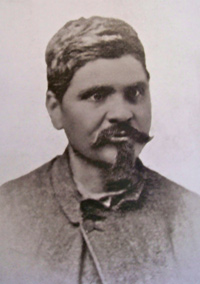 Between 1783 and 1817, however, the Spanish Mission system took 1,700 Miwok from their homes throughout Marin County to work for Mission Dolores in San Francisco. Only 485 of them survived, according to the exhibit.
Between 1783 and 1817, however, the Spanish Mission system took 1,700 Miwok from their homes throughout Marin County to work for Mission Dolores in San Francisco. Only 485 of them survived, according to the exhibit.
Many of the survivors were then moved to Mission San Rafael.
When the Mexican government ended the mission system in 1834, Governor José Figueroa decreed that each head of family and male Indian receive somewhere between two and 29 acres, as well as some of the mission’s livestock.
Five Coast Miwok received a total of approximately 80,000 acres in Nicasio but by 1870 had lost ownership of the land to white settlers. A few Miwok families continued living on the land, but a number of others moved to Marshall.
The only Indian who was able to actually buy traditional Miwok land was chief José Calistro (above), who in 1872 bought 24.53 acres surrounding his village at Nicasio for $980 in gold coin. However, chief Calistro died five years later, and in 1887, his son sold the land to his lawyer for $5. ________________________________________________________________
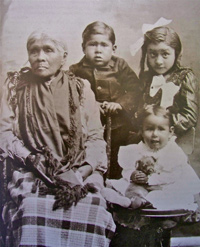 Much of what is known about the final days of the Miwok in Nicasio comes from the late Mary Copa.
Much of what is known about the final days of the Miwok in Nicasio comes from the late Mary Copa.
Mary Copa’s mother, Jauna Bautista, is seen here with her grandchildren, Joseph Monzaga, Julia Frease, and Edward Monzaga.
Nicasio, by the way, takes its name from a Miwok from the area. He was given the name Nicasio in 1808 when at the age of 20 he was part of a group of Indians baptized en masse at Mission Dolores.
The name originates with a 12th century Sicilian knight who fought in the crusades. _______________________________________________________________
The next day, Sunday, was a fundraiser for Marin Agricultural Land Trust. The crowd who showed up for MALT Day at Nicasio Valley Farms Pumpkin Patch was even bigger than the previous day’s.
Along with pumpkin picking and perusing the wares of the adjoining Nicasio Valley Cheese Company, people could get information about MALT, which was founded as a nonprofit alliance of environmentalists and conservation-minded ranchers.
Using grants, donations, and bond money, MALT buys agriculture-conservation easements from ranchers. The easements guarantee their land will be kept in agriculture in perpetuity, thus remaining open space without any commercial development or subdividing.
Squealing all the way, youngsters enthusiastically went down a giant slide during MALT Day.
It wouldn’t be a community celebration in West Marin without a 4-H bake sale.
Kids got a chance to ride a mechanical bull a la ‘Urban Cowboy’ but at a slower speed and with a softer landing should anyone get bucked off.
One way to keep the children entertained was to take them on train rides. _______________________________________________________________
 As many girls as boys overcame any fear of heights and clambered up the face of a MALT Day monolith.
As many girls as boys overcame any fear of heights and clambered up the face of a MALT Day monolith.
Using handholds children got their exercise climbing and then used their safety lines to rappel back to the bottom.
_____________________________________________________________
It wouldn’t be a harvest festival without a hayride, and for many youngsters this was their first.
Nicasio is in the geographic center of Marin County, and for that reason some landowners once proposed that Civic Center be built here; however, it was deemed too remote for East Marin residents. As a result, the town today has a population of only 96. At least according to the 2010 census. Yet it sure knows how to host a lot of fun. ________________________________________________________________

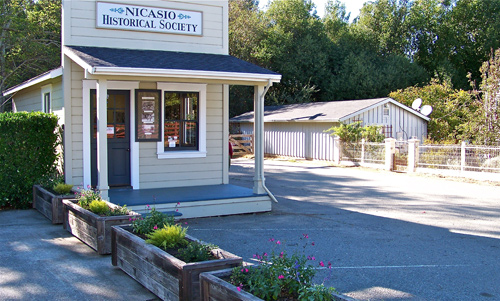
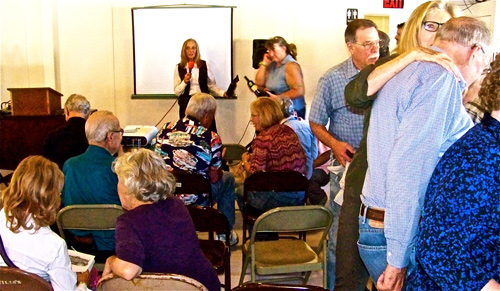
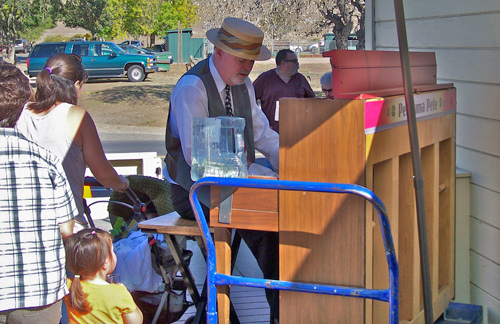
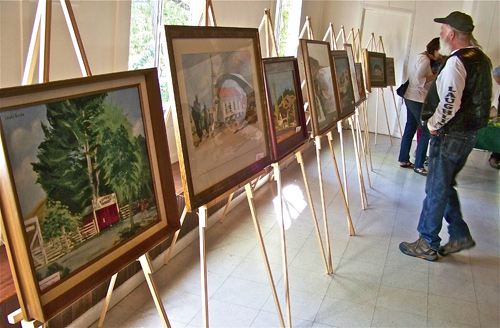
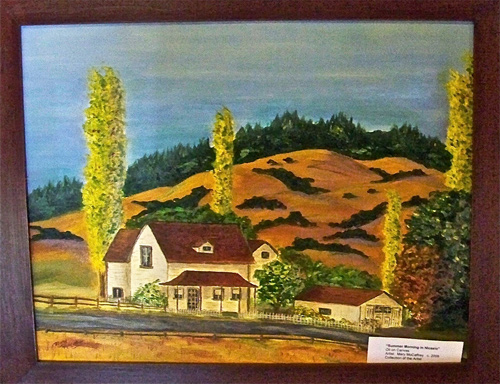
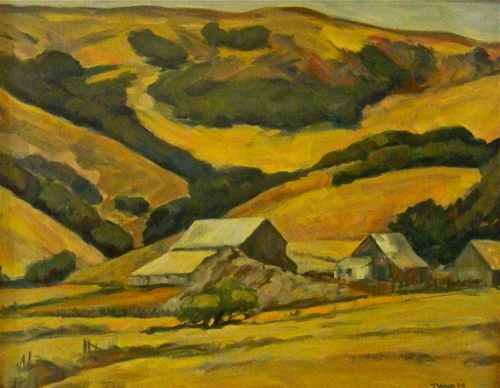
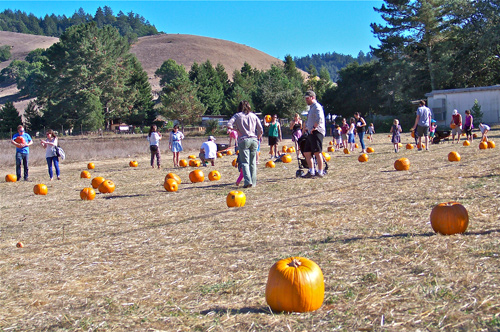

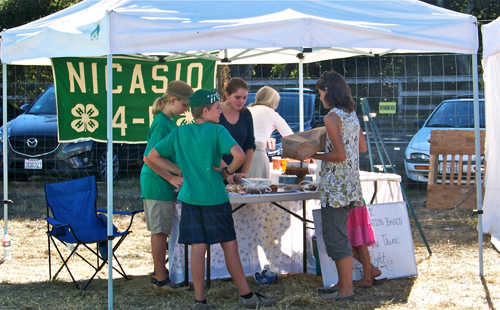

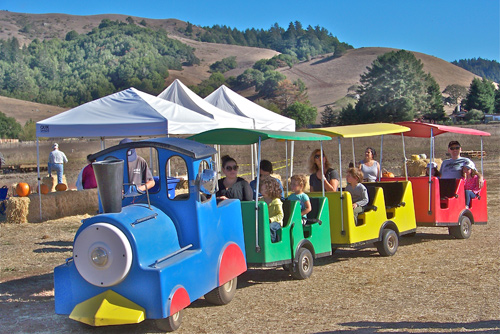
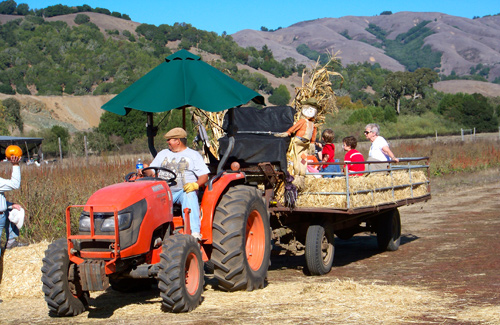
Hi, David, I came across your blog while doing research tonight. I’m sending you the e-mail I just sent to MAPOM. If you want the full e-mail & photos, let me know–Dean Silvers
Hi, MAPOM Folks,
Last week I scanned some pages of the 1962 book “Wild Oats: Sonoma County in the19th Century.” On page 3 there are photos of two “Bodega Miwok” people, one of whom I instantly recognized as being Tom Smith. The other person is a woman whom I suspect to be Julia Frias (AKA Julia Freese), which would make her the daughter of MarÃa Copa FrÃas (AKA, “Mary Copa”/”Maria Copa Frease”). The unnamed “Bodega Miwok” woman from the “Wild Oats” book sure looks a lot like Maria Copa, a photo of whom I’m enclosing from the Isabel Kelly monograph “Some Miwok Tales.”